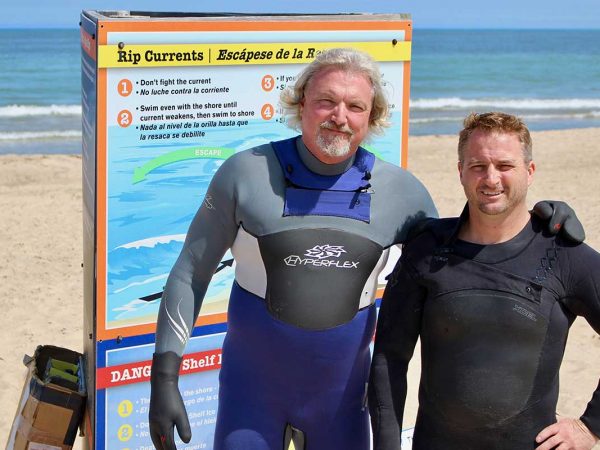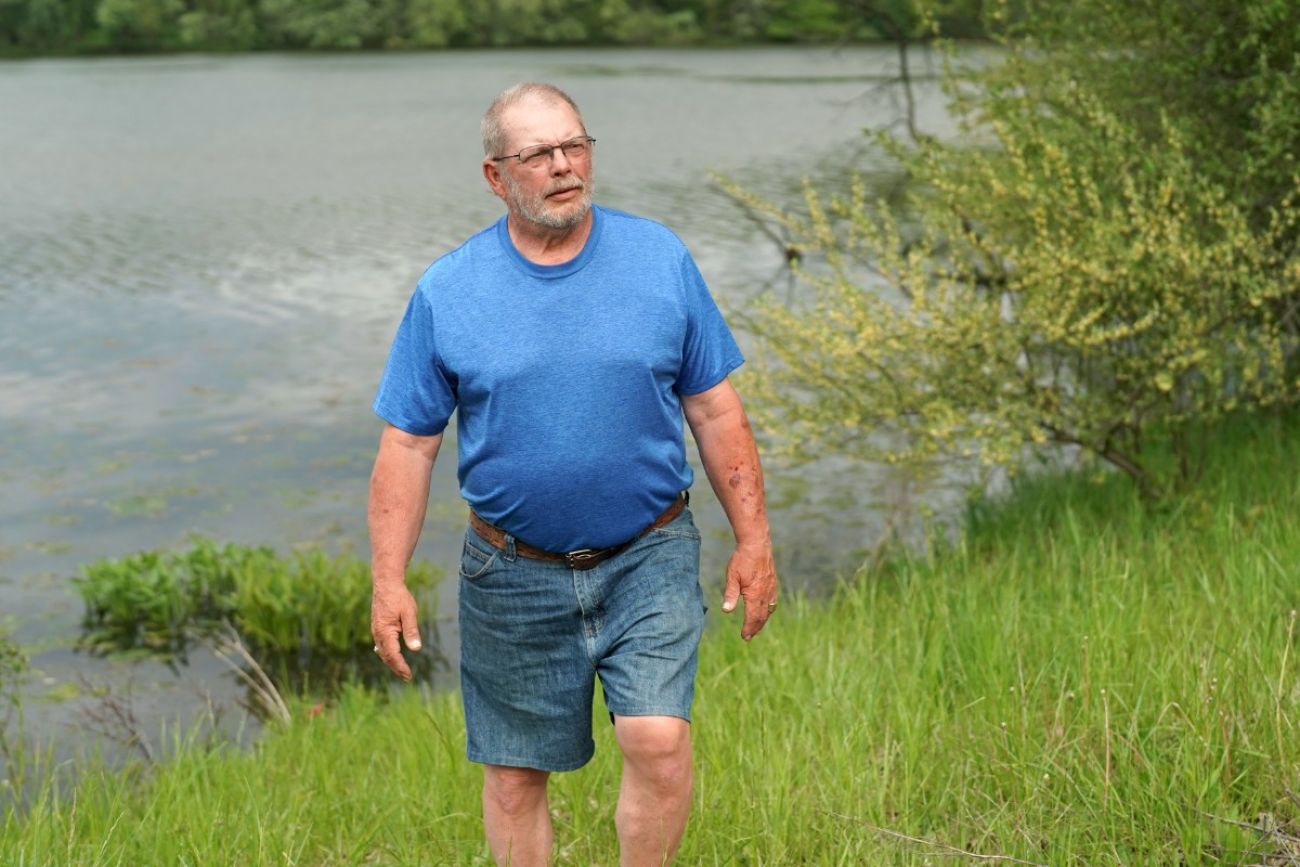
By Kelly House
Bill Gurn isn’t sure how he got the mosquito bite that nearly killed him in the autumn of 2019.
He’s an avid fisherman. Maybe on the water? Or it could have happened while he was tinkering in his garage or yard.
“There’s no telling where it came from,” he said, but the tiny bite would infect Gurn with a brain-swelling virus that first made him nauseous and then rapidly dissolved his ability to walk, talk or eat.
By the time he was admitted to a Kalamazoo hospital, Gurn said, “I was almost dead.”
The culprit was La Crosse encephalitis, an illness transmitted primarily by the eastern tree hole mosquito, or Aedes triseriatus. Like many disease-carrying mosquito species, Aedes triseriatus thrives in heat and moisture — both of which are becoming more intense during the Great Lakes region’s lengthening summers.
Although transmission rates of this and other mosquito-borne viruses vary from year to year, scientists believe climate change may be raising the risk of infection by extending Michigan’s mosquito seasons.
The combination of heat and storms is also increasing residents’ exposure to a host of other health threats, from waterborne pathogens that formerly couldn’t survive this far north, to bacteria-laden sewer overflows and toxic algae blooms.
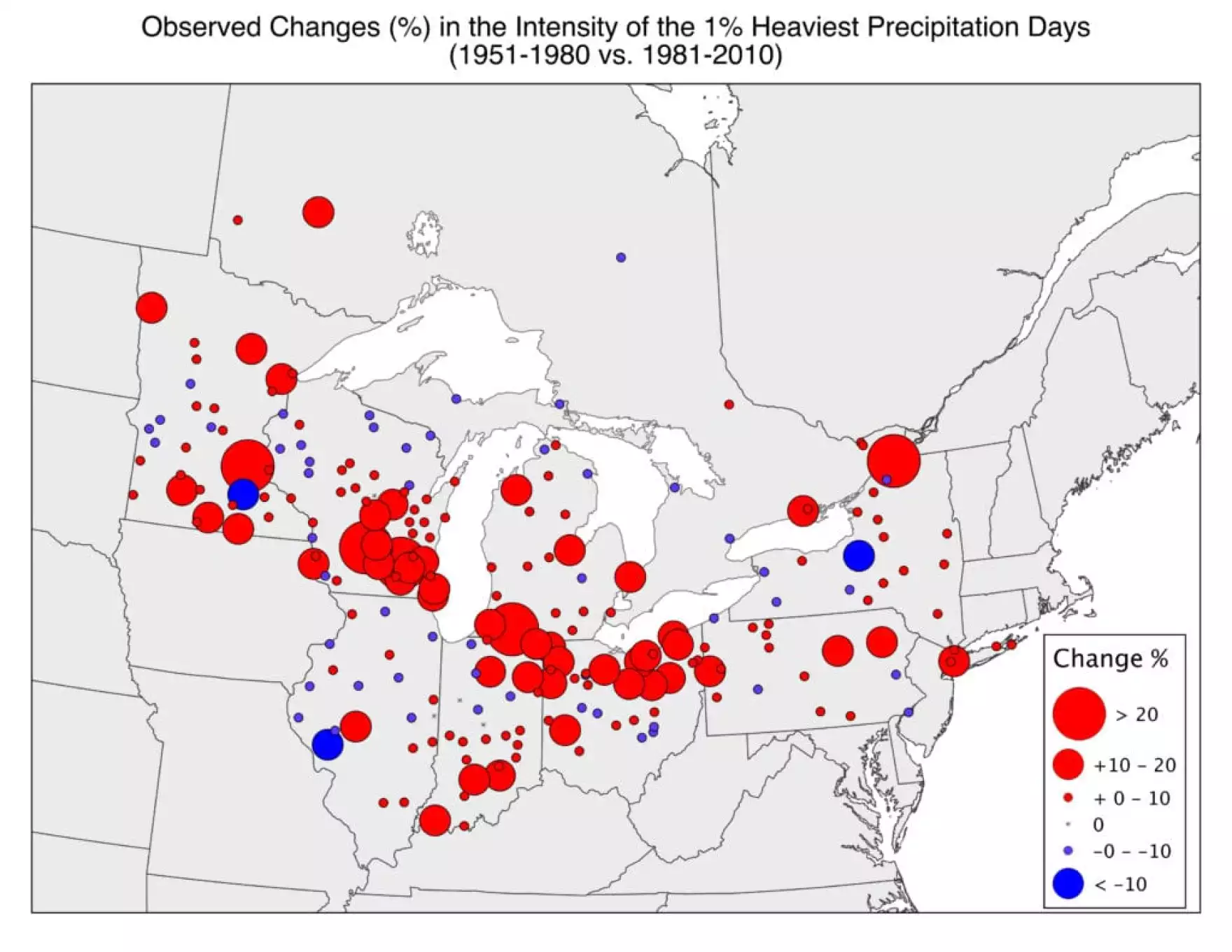
Across the Great Lakes region, the rainiest days are getting rainier. That heavy rain can strain infrastructure, overflow sewers and send parasites spewing into waterways. (Source: Great Lakes Integrated Sciences and Assessments)
“You’re going to have more waterborne problems,” said Annette Gilmer, a senior public health physician at Michigan Department of Health and Human Services. “There’s already over 7 million Americans that get sick every year from water, whether it’s recreational or consumption. So you just can assume that that number is going to go up.”
More rain, more heat, more risk
Average annual temperatures in the Great Lakes region have climbed 2.3 degrees Fahrenheit since 1951, and are expected to rise several degrees more this century.
That warming threatens human health and well-being around the globe, causing rising sea levels that are inundating coastal areas, extreme heat that is making equatorial areas unlivable, and massive wildfires in North America’s forests.
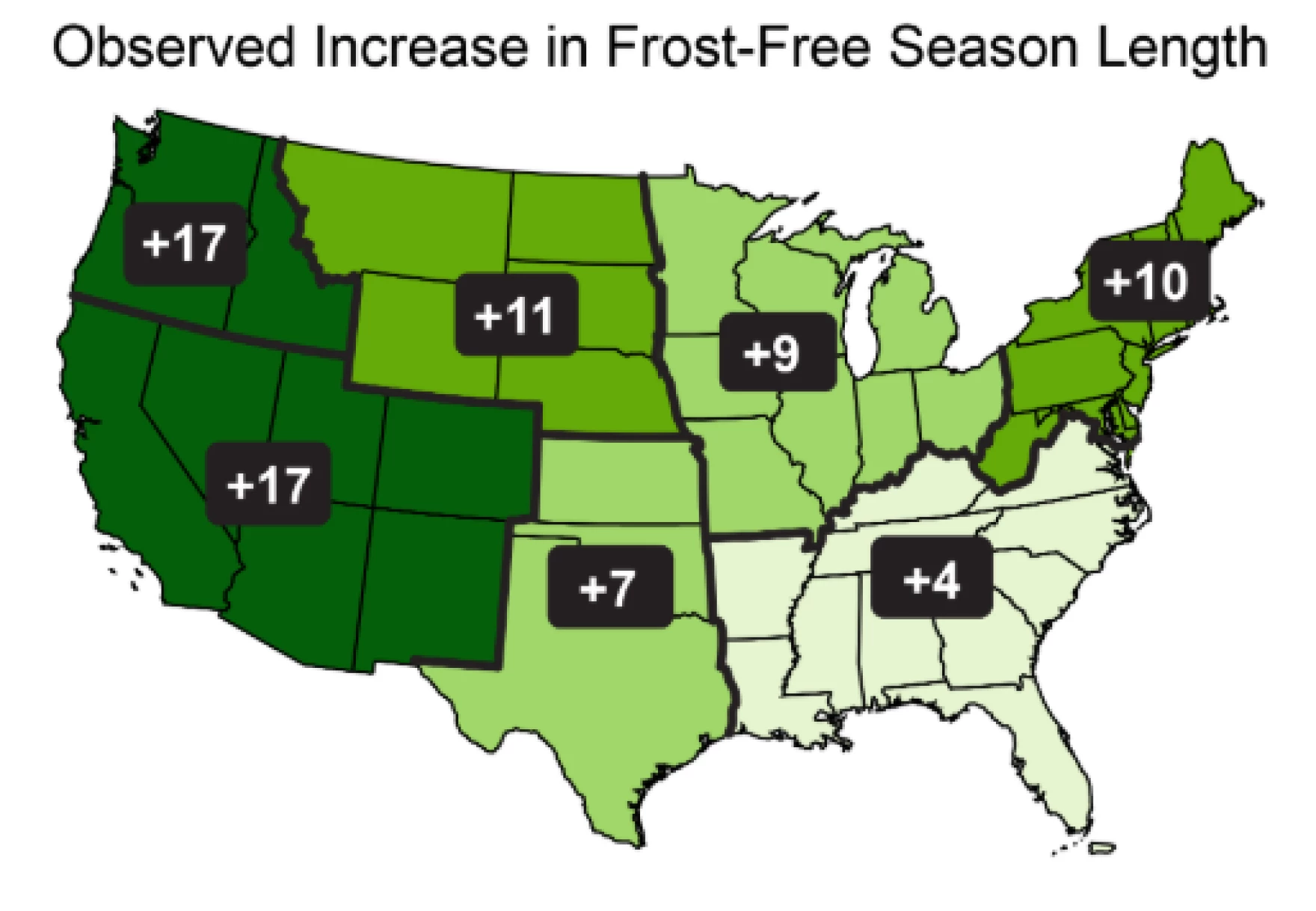
The “frost-free” season in the Great Lakes has increased by nine days between 1958 and 2012. (Source: Great Lakes Integrated Sciences and Assessments)
The Great Lakes region is often referred to as a “climate haven” because of its plentiful freshwater and relatively cool climate. But some of the region’s biggest climate vulnerabilities are also linked to its water.
Rainfall patterns are becoming more erratic, with frequent, gentle summer showers replaced by “more precipitation in fewer, heavier downfalls,” said Aaron Ferguson, who manages the climate and tracking unit within MDHHS.
Long-term data analyzed by the Great Lakes Integrated Sciences and Assessments shows that the heaviest storms now bring 25 percent more rain than they did before 1980. And those heavy storms are happening 24 percent more frequently.
The impacts of those changes to temperature and rainfall patterns are myriad. Some cold-dependent fish populationscould be doomed. The same goes for many longstanding winter recreation traditions. And farmers will increasingly feel the need to irrigate fields, potentially draining groundwater supplies and exacerbating water pollution in the process.
The region’s residents also face new and greater health risks.
- Several disease-carrying mosquito species have been expanding into parts of the Great Lakes region where winters were historically too cold for their survival. Longer summers allow mosquitoes to persist later into the year, increasing humans’ odds of being bitten.
- Increasingly extreme summer rainstorms often overwhelm sewer systems, spilling toilet water laden with bacteria and viruses into rivers, lakes, streets and basements. Sometimes, toxic mold proliferates in the hot, humid aftermath.
- Toxic algae proliferates in polluted, warm water. Climate change appears to be multiplying a threat initially caused by farm pollution, leading to more frequent summer algae blooms.
- Some aquatic pathogens associated with warmer climates appear to be moving northward into the Great Lakes region. One, the brain-eating amoeba Naegleria fowleri, killed a swimmer in Minnesota in 2010. That’s 550 miles further north than it had ever been observed before.
Last year, 105 Michigan beaches were closed to the public at least once, and elevated bacteria levels after a storm were frequently to blame.
A 2022 study focused on the Great Lakes region found that stomach bugs caused by parasites like giardia and cryptosporidium spike in the weeks after a storm. That correlates with earlier data that shows 67 percent of waterborne disease outbreaks happen after an extreme rainstorm.
Climate change will make those existing problems worse. A 2019 study by researchers at the University of Michigan estimated that illnesses caused by extreme precipitation could increase from 170 ER visits annually historically, to 220 visits annually by 2070.
A focus on preparedness
Michigan health officials can’t reverse the warming atmosphere and worsening storms that drive these health threats.
So they’re focused on education and planning.
Michigan’s state health department has launched several initiatives to help local communities adapt. That can look as simple as creating fact sheets to inform residents about the dangers of summer floods, algae blooms and mosquito bites, or as complex as building wetlands to absorb floodwater and prevent sewer overflows.
“Much of the infrastructure that we have in Michigan was not designed for the climate that we have now,” Ferguson said, “and that has health impacts.”
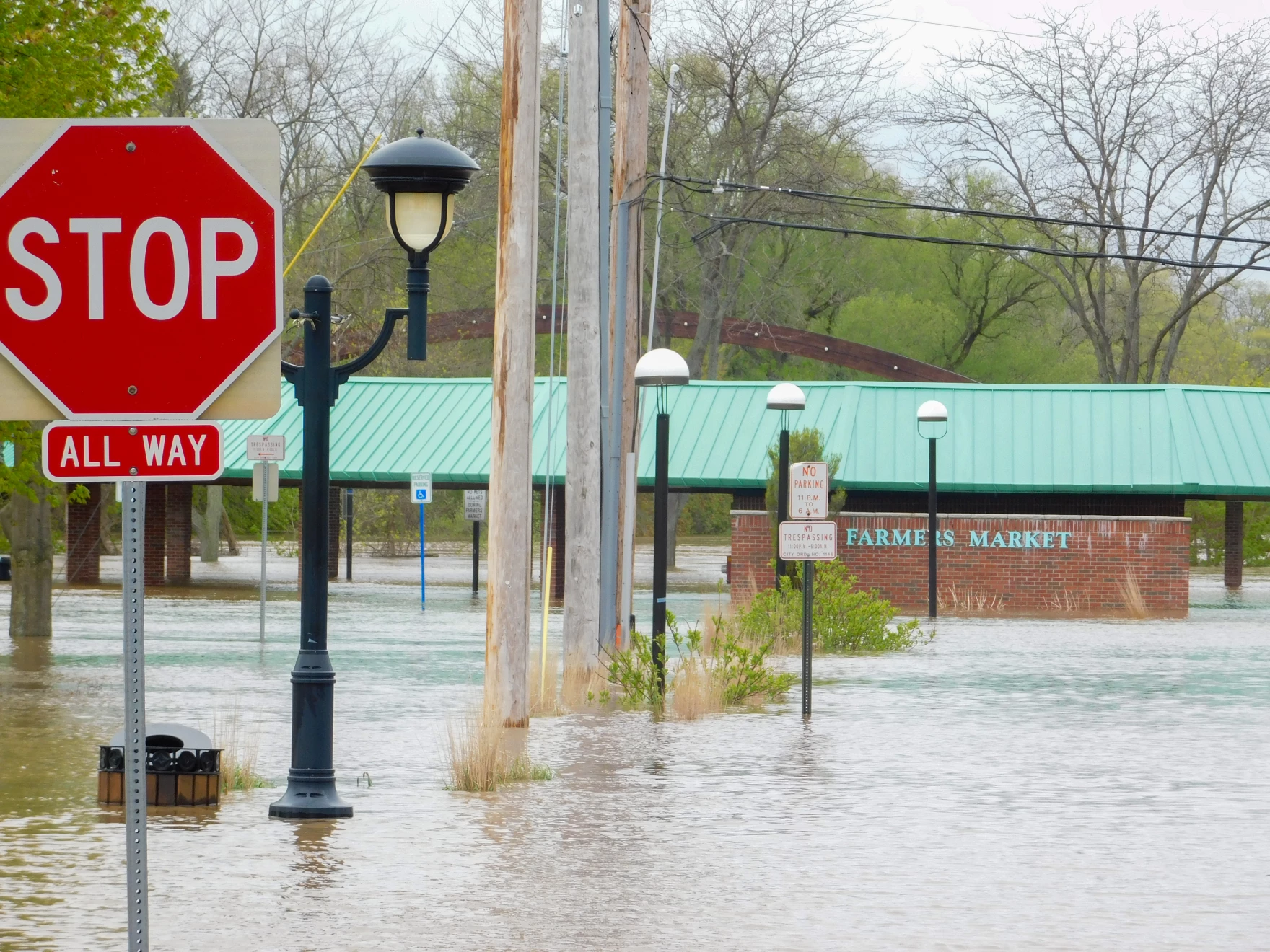
An intense rainstorm, typical of climate change, contributed to the failure of two dams in Midland in 2020. An onslaught of mosquitoes followed. (Photo by Steve Carmody, Michigan Public)
Overhauling Michigan’s infrastructure to better withstand floods will take money, time and policy change. Only last year did the state department of Environment, Great Lakes and Energy propose requiring local sewer projects to withstand bigger rainstorms.
But sewers only get replaced once every 50 to 100 years, which means those policy tweaks could take decades to fulfill their goal of reducing flood risks.
And higher-capacity sewers can’t eliminate the threats caused by, say, mosquitoes breeding in backyard kiddie pools or wooded wetlands.
That’s where health-care providers come in.
“Health professionals have to be able to think of things that used to be unusual,” said Dr. Lisa Del Buono, president of Michigan Clinicians for Climate Action.
For example, La Crosse encephalitis is so rare — Michigan has had eight reported cases in the past decade — that Gurn’s doctors at first sent him back home from the hospital, he said: “They couldn’t find nothing wrong.”
When he returned with worse symptoms, he went through a battery of tests before a spinal tap identified a mosquito bite as the source of his illness.
The need for better preparedness extends beyond diagnosis and treatment, Del Buono said. Doctors must get better at recognizing the environmental factors that caused their patients to fall ill, and helping patients avoid them in the future.
There is some evidence of progress, she said, such as a student-led effort to incorporate more climate-related lessons into the University of Michigan’s medical school curriculum.
“The way we were trained in my generation is, somebody came into the clinic, you made the diagnosis, you treated them and they left,” Del Buono said. “I don’t think we were trained in such a way to think, well, what brought them into the clinic and are we letting them go with adequate support?”
For instance, doctors could advise giardia patients to avoid contact with floodwater and stay away from beaches after a storm. Or they could warn patients recovering from mosquito-borne illness that stagnant pools and bird baths make good mosquito breeding grounds.
Gurn, the Allegan man who barely survived a mosquito-borne infection, has become something of a climate adapter himself. These days, he rarely goes fishing without first applying bug spray.
“I can’t emphasize enough to anyone: Make sure you put your DEET on when you’re outside,” he said. “Just be aware of the situation, because I didn’t do anything special to get it.”
Catch more news at Great Lakes Now:
Are Great Lakes cities ready for climate migrants?
The Northwoods is now a month into unusually early maple tapping season
Featured image: Bill Gurn nearly died after being bitten by a virus-carrying mosquito. Longer, hotter, stormier summers may be raising the risk. (Bridge photo by Mark Bugnaski)



